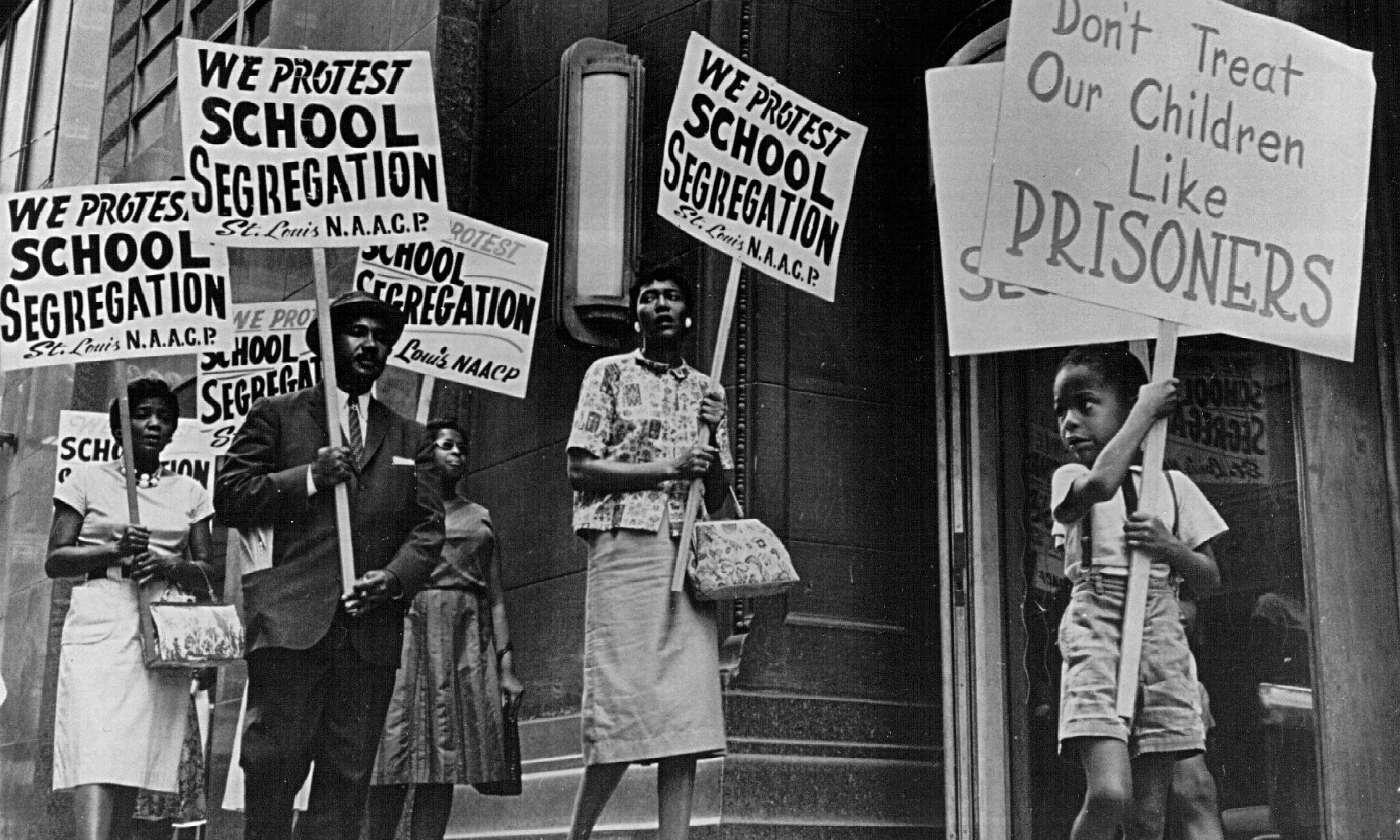The Significance Behind Today’s Google Doodle of Puerto Rican Activist Felicitas Mendez
Today’s Google Doodle is an eye catching image: an illustration of a smiling brown-skinned woman. She watches children of all colors go into a sun-drenched school, palm trees lining the walkways. A man in a suit escorts two of the brown-skinned children into the building.
The Doodle is of Puerto Rican activist Felicitas Mendez, a woman instrumental in the fight against school segregation between whites and Latinos in the 1940s.
Born in the town of Juncos in Puerto Rico, Mendez moved to the mainland United States when she was 10-years-old. It was here that she experienced her first taste of American racism and inequality.
Because of their mixed-race Puerto Rican heritage, Mendez (née Gómez) and her family were racialized as “Black” by white Americans, and therefore subject to anti-Black discrimination. But when her and her family moved to Southern California to work the fields, she was racialized as “Mexican” and discriminated against by anti-Hispanic racists.
Felicitas Mendez and her husband, Gonzalo Mendez, were the key figures behind the landmark anti-segregation case, Mendez vs. Westminster.
Mendez vs. Westminster was a California civil rights desegregation case which successfully ended the segregation between Latino and white students in the state of California.
As the story goes, the Mendez family moved from the integrated town of Santa Ana, California to Westminster, California, where they were shocked to discover the students were divided into “white” and “Mexican” schools. Since the doctrine of “separate but equal” schooling was a myth, Mexican schools received far less government funding and gave inferior education.
The school for Mexican students was so bad, that Mendez’s daughter Sylvia (an activist in her own right) later described it as a pair of wooden shacks on a dirt lot, surrounded by an electric fence.

Instead of going along with Westminster school district’s policy of segregation, Felicitas Mendez and her husband decided instead to challenge their policy.
In 1945, on behalf of roughly 5,000 Hispanic-American school-aged students, Mendez and her husband filed a lawsuit against Westminster School District of Orange County. And they ended up winning.
The Westminster school-board appealed, but to no avail. In 1947, the Ninth Circuit Court of Appeals affirmed the district court’s ruling in favor of the Mendezes.
This lawsuit, Mendez v. Westminster, would eventually become the spark that ignited the larger fight against school segregation throughout the nation. Shortly after the win, then-California Governor Earl Warren ordered all California public schools other public spaces to desegregate as well.
Mendez’s experience as being labeled as both Black and Mexican at various points in her life made her an active anti-racist, sensitive to the plight of people and children of all colors.
“We had to do it. Our children, all of our children, brown, black,
and white, must have the opportunity to be whatever they want to be, and education gives them that opportunity,” she said in a 1998 interview.
As today’s Google Doodle illustrator Emily Barrera says: “When I see Felicitas, I see a strong woman, a fighter, a mother, a pioneer in the Civil Rights movement, fighting for the same rights as her own family and heritage.” And that is what she was. A brave activist, yes. A fighter, yes. But above all, a loving mother who wanted a better future for her children.




